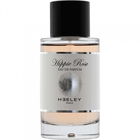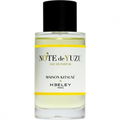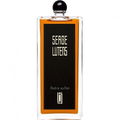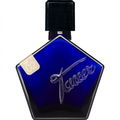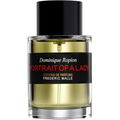
loewenherz
917 Reviews
Translated · Show original

loewenherz
Top Review
31
Of Tristan and Isolde
In the recent history of perfume - that is, over the last hundred years or so, during which a multitude of fragrance ingredients from various origins have become available - there have repeatedly been combinations of two or more such fragrance ingredients or accords that have stood out against others. Some of these combinations were given their own names and established fragrance families, such as Chypres or Fougères. Presumably, the leading combination of the present seems to be that of Oud and Rose - once emerging from a niche and initially used in the high-price segment, Oud-Rose fragrances can now also be found on drugstore shelves - and it is becoming increasingly difficult to succeed with a Rose-Oud fragrance.
What still makes the duo of Oud and Rose, which can sometimes be almost tiresome to smell, particularly special is that it is a dialogue between two similarly strong fragrance characters: Oud, the legendary resin from the heartwood of the Southeast Asian agarwood tree infected by a rare fungus, whose scent is deep and dark - and once almost mystical - yet reminiscent of the cry of a bird of prey, and the Rose, perhaps the most iconic of floral scents, which can range from girlishly playful to lasciviously lustful. These two stand opposite each other like kings - and the essence of the fragrance they shape is determined not solely by their quality, but also by their balance and harmony - and their dialogue.
Agarwoud is: an Oud and Rose fragrance. To call it 'best-in-class' would probably be unfair to the many other Oud-Rose fragrances that I may not even know, but among those I am familiar with, it is one of the most beautiful in terms of the aforementioned quality of its ingredients and their balance. One reason for the popularity of the Rose/Oud combination is its high-quality appearance; in short: Oud-Rose fragrances often smell 'expensive' - at least in the sense that inexperienced noses imagine an 'expensive perfume.' And like much that appears superficially expensive, the line to the ordinary is a narrow one. This does not apply to Agarwoud, likely due to the incense that elegantly calms this capricious duo.
World literature is full of touching, lengthy love stories, and the tragic and dramatic ones, it seems, have always fascinated people and fueled their imagination the most - whether it was Montagues and Capulets in Verona or other unfortunate lovers. And when the Cornish prince Tristan and the Irish princess Isolde were buried together at the end of their ill-fated and tear-laden love, it is said that a vine was planted on Isolde's grave and a rose bush on Tristan's. And as the rose and vine grew over the years, they intertwined so closely that one day a rose blossom sprouted from the vine, uniting the lovers in death.
Conclusion: whether the pairing of Oud and Rose will leave more than a fleeting trend of the 2010s - or whether they will grow inseparably into each other, remains to be seen. As long as there are such fragrances as Heeley's Agarwoud, I would regret their disappearance.
What still makes the duo of Oud and Rose, which can sometimes be almost tiresome to smell, particularly special is that it is a dialogue between two similarly strong fragrance characters: Oud, the legendary resin from the heartwood of the Southeast Asian agarwood tree infected by a rare fungus, whose scent is deep and dark - and once almost mystical - yet reminiscent of the cry of a bird of prey, and the Rose, perhaps the most iconic of floral scents, which can range from girlishly playful to lasciviously lustful. These two stand opposite each other like kings - and the essence of the fragrance they shape is determined not solely by their quality, but also by their balance and harmony - and their dialogue.
Agarwoud is: an Oud and Rose fragrance. To call it 'best-in-class' would probably be unfair to the many other Oud-Rose fragrances that I may not even know, but among those I am familiar with, it is one of the most beautiful in terms of the aforementioned quality of its ingredients and their balance. One reason for the popularity of the Rose/Oud combination is its high-quality appearance; in short: Oud-Rose fragrances often smell 'expensive' - at least in the sense that inexperienced noses imagine an 'expensive perfume.' And like much that appears superficially expensive, the line to the ordinary is a narrow one. This does not apply to Agarwoud, likely due to the incense that elegantly calms this capricious duo.
World literature is full of touching, lengthy love stories, and the tragic and dramatic ones, it seems, have always fascinated people and fueled their imagination the most - whether it was Montagues and Capulets in Verona or other unfortunate lovers. And when the Cornish prince Tristan and the Irish princess Isolde were buried together at the end of their ill-fated and tear-laden love, it is said that a vine was planted on Isolde's grave and a rose bush on Tristan's. And as the rose and vine grew over the years, they intertwined so closely that one day a rose blossom sprouted from the vine, uniting the lovers in death.
Conclusion: whether the pairing of Oud and Rose will leave more than a fleeting trend of the 2010s - or whether they will grow inseparably into each other, remains to be seen. As long as there are such fragrances as Heeley's Agarwoud, I would regret their disappearance.
1 Comment




 Oud
Oud Benzoin
Benzoin Bulgarian rose
Bulgarian rose Amber
Amber Frankincense
Frankincense











 Avalancher
Avalancher Hvsams
Hvsams PanniPanini
PanniPanini R3mt9
R3mt9 Yatagan
Yatagan ChatonNoir
ChatonNoir Ergoproxy
Ergoproxy Turandot
Turandot Aida13
Aida13 ClemensJ
ClemensJ










